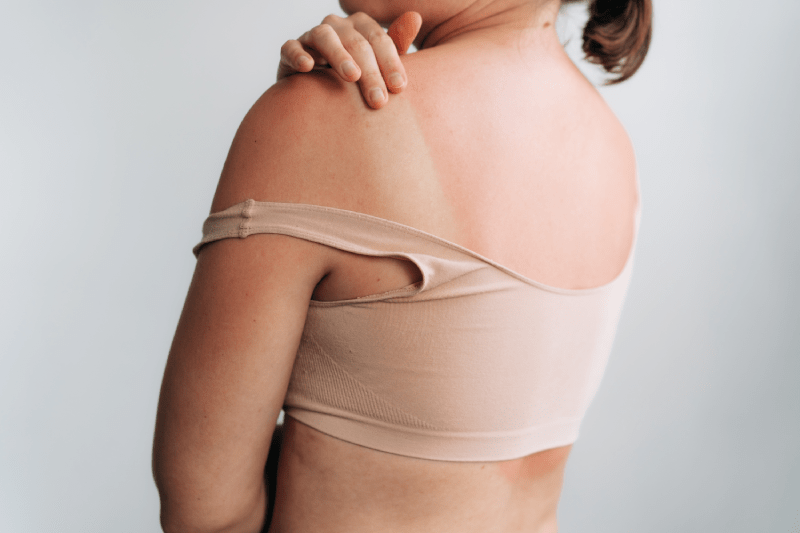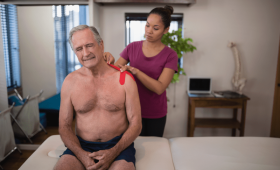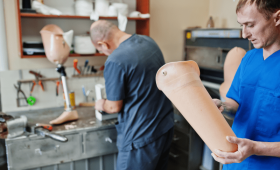What is Shoulder Arthroplasty (Shoulder Replacement)?
Shoulder Arthroplasty is the procedure of replacing the damaged bone surfaces (humeral head and glenoid) forming the shoulder joint with artificial materials such as metal, plastic, or ceramic. This surgical procedure generally aims to relieve severe pain and restricted mobility caused by shoulder osteoarthritis, severe fractures, or irreparable rotator cuff tears. Since the shoulder is the most mobile joint in the body, the success of the prosthesis is vital for the patient to return to daily life activities (combing hair, dressing, etc.). The prosthesis significantly improves the quality of life by providing a pain-free and functional shoulder joint.
What are the Most Common Indications for Shoulder Replacement Surgery?
Shoulder replacement becomes necessary when conservative (non-surgical) treatments (medications, physical therapy, injections) are insufficient and reduce the patient’s quality of life. The most common indications are: advanced stage Osteoarthritis (arthrosis), inflammatory joint diseases such as Rheumatoid Arthritis, bone death due to impaired blood supply to the humeral head (Avascular Necrosis – AVN), Cuff Tear Arthropathy caused by irreparable large rotator cuff tears, and multi-fragmentary, complex humeral head fractures. In these situations, persistent pain even at rest and progressive restriction of movement trigger the decision for surgery.
What are the Symptoms of Shoulder Osteoarthritis (Arthrosis)?
The most prominent symptom of shoulder osteoarthritis is severe pain, usually felt in the front or side of the shoulder, which worsens with activity, but in advanced stages, wakes the patient up even at rest and during sleep. The second important symptom is restricted mobility; patients struggle to reach overhead with their arms, scratch their backs, or get dressed. As arthrosis progresses, grinding or crackling sounds (crepitus) may come from the joint, and muscle weakness may develop in the shoulder. When these symptoms paralyze daily life, it is time for an evaluation for prosthesis surgery.
How Do I Know When I Am “Ready” for Surgery?
The indicators that you are ready for surgery are not only medical but also relate to your quality of life. The “readiness” status means that other treatment options have been exhausted, the pain has become uncontrollable even during rest or sleep, and restricted mobility is severely preventing you from performing your daily life activities (eating, brushing teeth, dressing). Medically, the decision is confirmed after your surgeon’s detailed imaging (X-ray, MRI, or CT) and physical examination confirm that the joint damage is irreversible. Preparation also involves pre-operative steps such as quitting smoking and optimizing your overall health.
What is Anatomic Total Shoulder Arthroplasty (TSA) and Who is it Applied to?
Anatomic Total Shoulder Arthroplasty (TSA) mimics the natural anatomical structure of the shoulder. In this technique, the damaged humeral head (the ball of the arm bone) is replaced with a metal head, and the worn socket (glenoid) in the shoulder blade is replaced with a polyethylene component. The essential condition for this prosthesis to be applied is that the muscle and tendon group called the “Rotator Cuff,” which provides shoulder movement, must be healthy and functional. TSA is ideal for patients with advanced osteoarthritis where the Rotator Cuff is intact and the arthritis affects both the ball and socket parts. It is the type of prosthesis that best mimics natural joint movement.
What is Reverse Shoulder Arthroplasty (RSA)?
Reverse Shoulder Arthroplasty (RSA) is a revolution designed for special situations where conventional prostheses are insufficient. As the name suggests, the natural ball-and-socket structure of the shoulder is reversed: the ball part is placed on the shoulder blade (glenoid), and the socket part is placed on the arm bone (humerus). This reversal makes the mechanism of the deltoid muscle more efficient in lifting the arm, especially in patients whose Rotator Cuff muscles are completely torn or non-functional. RSA is the gold standard treatment for irreparable Rotator Cuff Arthropathy (arthritis due to a tear) and some complex fractures.
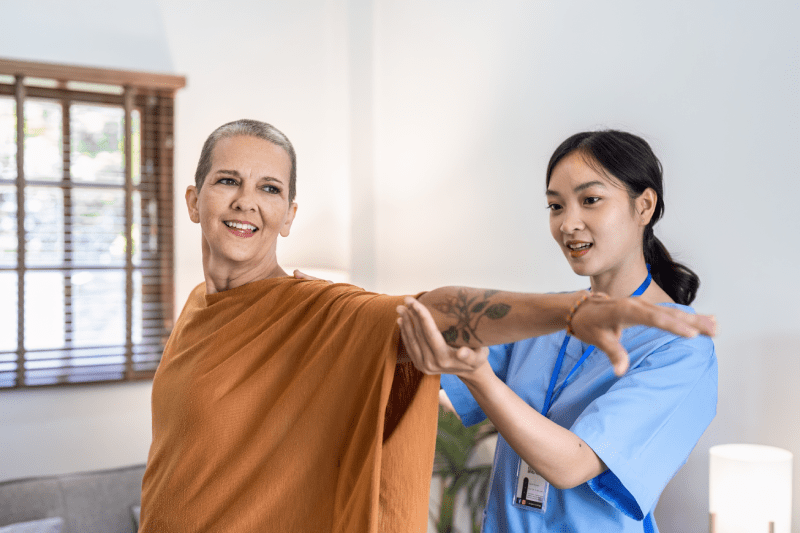
Is Reverse Shoulder Arthroplasty Different from the Classic Prosthesis? (Working Principle)
Yes, the difference between Reverse Shoulder Arthroplasty (RSA) and Anatomic Total Shoulder Arthroplasty (TSA) is not only the reversed placement of the implants but also the working principle. While TSA relies on healthy Rotator Cuff muscles for movement; RSA, in cases where the Rotator Cuff is non-functional, delegates the task of lifting the arm to the main muscle, the Deltoid Muscle, by shifting the center of rotation inward and downward. This allows the patient to lift their arm despite having torn muscles. This anatomical change completely differentiates the surgical and rehabilitation processes, making RSA a necessary option for certain patient groups.
Partial Shoulder Replacement (Hemiarthroplasty): When is it Preferred?
Partial Shoulder Replacement (Hemiarthroplasty) is a surgical method where only one surface of the shoulder joint, the damaged humeral head (ball), is replaced, while the glenoid socket is preserved in its natural state. Hemiarthroplasty is generally preferred in cases such as: multi-fragmentary humeral head fractures with impaired blood supply (especially in elderly patients), and rare situations where arthritis only affects the humeral head but the glenoid cartilage remains relatively healthy. Although this method is less invasive than Total Replacement, the risk of wear and pain developing on the preserved natural glenoid surface over time is a major consideration, making proper patient selection crucial.
Why is Socket Replacement (Glenoid Component) Necessary in Shoulder Replacement?
Replacement of the glenoid (socket) component is mandatory when there is significant cartilage wear and bone loss not only on the humeral head (ball) but also on the glenoid surface. If the worn and deformed glenoid surface is not replaced, the new metal humeral head placed will rapidly erode the remaining damaged natural socket. This can lead to persistent post-operative pain, early loosening of the prosthesis, and the need for revision in a short time. Therefore, the main components of Anatomic Total Shoulder Arthroplasty are the humeral head and the polyethylene glenoid component.
What are the Main Applications of Reverse Shoulder Arthroplasty?
Reverse Shoulder Arthroplasty (RSA) is designed for three main indications where traditional methods fail: Rotator Cuff Tear Arthropathy: Arthritis and loss of function caused by irreparable massive tears. Complex Humeral Fractures: Especially fragmented fractures in elderly patients with questionable blood supply and poor bone quality. Failed Anatomic Prosthesis Revision: When a previously applied Anatomic Total Prosthesis loses function due to a rotator cuff tear. This special prosthesis aims to restore arm function even in these challenging situations.
How Long Does Shoulder Replacement Surgery Take and How Is It Performed?
Shoulder replacement surgery typically takes between 1.5 and 3 hours, depending on the type of prosthesis and the complexity of the case (primary or revision). The surgery is usually performed under general anesthesia with the patient in a semi-sitting position (beach chair). The surgeon makes an incision from the front or side of the shoulder to access the joint. The damaged humeral head and/or glenoid are removed, and the prosthesis components are fixed to the bone using special techniques (cemented or cementless). The final stage of the operation involves balancing the soft tissues and protecting critical structures like the axillary nerve. Surgeons in Turkey perform these procedures meticulously.
What Factors Affect the Success of Shoulder Replacement?
The most critical factors affecting the success of shoulder replacement are the surgeon’s experience and expertise (especially surgeons who perform a high volume of shoulder replacements annually), the correct choice of prosthesis type (Anatomic, Reverse, Partial) appropriate for the patient’s condition, and the quality of the implant used (FDA/CE approved). Furthermore, the patient’s pre-operative general health, non-smoking status, adherence to the physical therapy program, and compliance with post-operative restrictions also directly impact the success rate. All these factors are optimized in high-level healthcare centers in Turkey.
What are the Main Risks and Complications of Shoulder Replacement Surgery?
Like any major surgical procedure, shoulder replacement surgery carries certain risks. The main complications include: Infection (the most serious complication, which may require revision), Prosthesis Loosening or Dislocation (especially in the early period), Nerve Damage (temporary or permanent loss of sensation/weakness), Blood Clots (deep vein thrombosis), and Shoulder Stiffness (if rehabilitation is insufficient). These risks are kept very low in Turkish hospitals with international accreditations due to strict sterilization protocols and experienced surgical teams.
Which Anesthesia Method is Used in Shoulder Replacement Surgery?
Shoulder replacement surgery is generally performed under General Anesthesia. However, to manage pain during and after the surgery, Regional Anesthesia (Nerve Block) is often administered in addition to General Anesthesia. This nerve block (usually an interscalene block) significantly reduces pain in the arm and shoulder area for the first 12-24 hours post-surgery, helping the patient have a much more comfortable awakening and early mobilization process. This multimodal pain management approach is standard practice by modern anesthesiologists in Turkey.
What Tests and Preparations Are Required Before Surgery?
The pre-operative preparation process is vital for minimizing risks. Required tests include: Detailed Radiological Imaging (X-ray, CT/MRI – for prosthesis planning), Routine Blood Tests, ECG, and Chest X-ray. Additionally, internal medicine and cardiology (heart) examinations are performed to assess the patient’s overall health. Any existing dental problems and other sources of infection in the body must be treated before the surgery, as the risk of infection poses a major threat to the prosthesis. The patient is also instructed to stop smoking at least two weeks before the operation and discontinue certain blood-thinning medications.

How Long Does the Recovery Process Take After Shoulder Replacement Surgery?
The time for full recovery after shoulder replacement surgery varies depending on the type of prosthesis (TSA or RSA) and the patient’s adherence to rehabilitation. Generally, the most critical recovery period is between 3 and 6 months. Patients wear an arm sling for the first 6 weeks post-surgery. Returning to basic daily activities (dressing, eating, drinking) happens between 6 and 12 weeks. Regaining full strength and endurance can take from 6 months up to a year. The speed of recovery varies individually, but functional results are highly rewarding with successful surgery and disciplined physical therapy.
When Does Physical Therapy Start and How Long Does It Last After Shoulder Replacement Surgery?
Physical therapy is the key to the success of shoulder replacement surgery and usually starts immediately after the operation (often within the first 24-48 hours). In the early period, the physiotherapist focuses on passive movements (moving the arm with the support of the therapist or sling, not under the patient’s own power). Active movements begin after the 6th week. The intensive physical therapy process generally lasts 3 to 6 months, but strengthening exercises performed at home should continue for up to a year. Starting physical therapy early and being disciplined is critical for preventing shoulder stiffness and maximizing the range of motion.
How Long Should the Arm Sling Be Worn After Surgery?
The use of an arm sling (immobilizer sling) after surgery depends on the surgical technique and the type of prosthesis. After Anatomic Total Shoulder Arthroplasty (TSA), it is generally recommended to wear the sling continuously for 3 to 4 weeks to protect the soft tissues and the Rotator Cuff repair. In Reverse Shoulder Arthroplasty (RSA), the sling period may be shorter, around 2 to 4 weeks, as rotator cuff protection is less of a concern. The sling should only be removed for exercises and showering. Compliance with the surgeon’s instructions regarding sling use is crucial to prevent prosthesis dislocation and allow wound healing.
When Can I Return to Work and Daily Activities with a Shoulder Replacement?
The time to return to work after shoulder replacement depends on the nature of the job. Patients with desk jobs or light office work can return to work 2 to 4 weeks after surgery when they can use a computer with one hand. Those with physically demanding jobs must generally wait 3 to 6 months until full muscle strength and endurance are regained. As for driving, patients should wait until the sling is removed and they have regained the strength to hold the steering wheel safely with both hands (typically around 6 weeks), with the surgeon’s approval.
What is the Lifespan of a Shoulder Prosthesis and is Revision Required?
Modern shoulder prostheses are highly durable, manufactured using advanced materials (high-density polyethylene, titanium). Current data suggests that the vast majority of shoulder prostheses (90-95%) function successfully for 10 to 15 years after implantation. For many patients, this period can extend up to 20 years. The end of the prosthesis’s lifespan typically results in loosening due to wear, restricted joint movement, and the return of pain. In this case, Revision Shoulder Replacement Surgery may be required to replace the prosthesis with a new one. To extend the life of the prosthesis, it is important to continue exercises recommended by the doctor and avoid heavy lifting.
Why Should You Choose Turkey for Shoulder Replacement Surgery?
Turkey is an ideal destination for international patients seeking a high-quality, economical, and fast solution for shoulder replacement surgery. Unlike the long waiting lists and exorbitant costs in Western countries, Turkey offers world-class treatment using modern hospitals with international accreditations like JCI and advanced surgical systems. Turkish orthopedic surgeons have great expertise due to their high case volumes and global training. Most importantly, surgeries using the same high-quality, FDA/CE-approved implants are offered at prices up to 50% lower compared to developed countries due to competitive currency advantages.
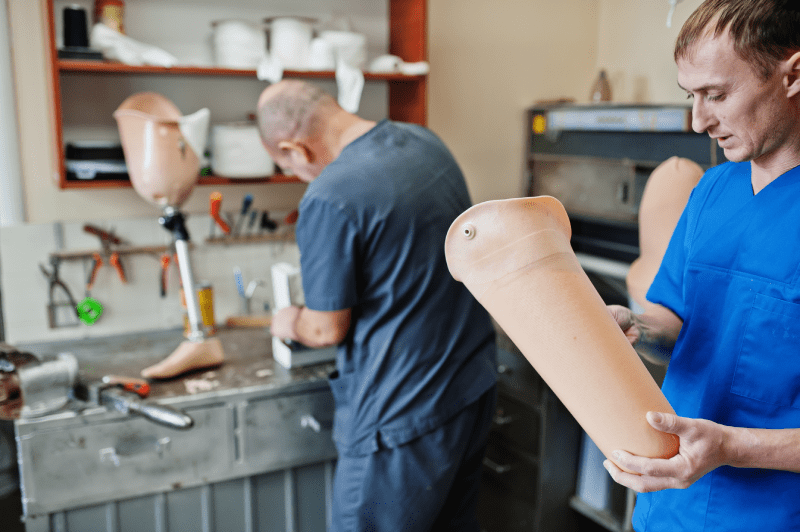
International Quality Standards of Hospitals in Turkey
Major healthcare groups and private hospitals in Turkey are accredited by the Joint Commission International (JCI), which monitors international patient safety and quality. This accreditation guarantees that hospitals adhere to the highest global standards in sterilization, patient care protocols, quality of medical equipment, and surgical outcomes. Furthermore, many hospitals specialize in Robotic Surgery and Minimally Invasive techniques. Turkey’s commitment to this high medical quality ensures that international patients receive treatment with confidence.
Expertise and Experience of Turkish Shoulder Surgeons
The foundation of Turkey’s success in medical tourism is the deep expertise of its orthopedic surgeons. Many Turkish shoulder surgeons have completed advanced fellowship programs in America and Europe and have achieved high case numbers in shoulder surgery. This experience guarantees correct prosthesis selection and millimeter-precise placement, especially in complex procedures like Reverse Shoulder Arthroplasty. The continuous participation of surgeons in international conferences and the application of the latest techniques confirm that patients will receive expertise at global standards.
Cost Advantage and Transparency of Shoulder Replacement in Turkey
The cost of shoulder replacement surgery in Turkey is significantly lower than in Western countries for the same quality of implants and services. This advantage stems from lower general operating costs and competitive exchange rate differences. Medical tourism companies offer all-inclusive packages covering surgery, anesthesia, hospital stay, implant, and early rehabilitation, ensuring cost transparency. Patients experience the comfort of receiving a clear and final price before starting treatment.
Waiting Period for Shoulder Replacement Surgery in Turkey
One of Turkey’s greatest advantages is that there is almost no waiting period for shoulder replacement surgery, unlike the months-long waiting lists in Europe and North America. Patients can typically travel to Turkey and undergo surgery within a few weeks of completing the online consultation and necessary paperwork. This rapid process is crucial for patients suffering from pain to access treatment as soon as possible and begin their recovery journey.
Why Should You Get Shoulder Replacement Treatment with Cure Holiday?
Cure Holiday is a reliable, end-to-end service partner connecting international patients with the best JCI-accredited hospitals and shoulder surgeons in Turkey. Choosing Cure Holiday means not just a surgery appointment, but a personalized, turnkey healthcare experience. The company manages all logistical, accommodation, transfer, and communication processes, completely relieving the patient of stress so that the patient’s sole focus is on the recovery process. Cure Holiday stands out with its commitment to transparency in treatment quality and excellent customer service.
All-Inclusive Packages Offered by Cure Holiday
Cure Holiday’s shoulder replacement packages include everything the patient needs from the moment they arrive in Turkey until they safely return to their home country. These packages cover: Surgery and hospital fees, high-quality prosthetic implant, VIP transfers between the airport and hospital, comfortable accommodation (hotel or residence) suitable for post-operative recovery, 24/7 personal translator and escort support, and early intensive physical therapy sessions. This holistic approach ensures patients recover completely in peace.
Pre-Surgery Consultation Process with Cure Holiday
Cure Holiday conducts a comprehensive online consultation process to ensure full transparency before treatment begins. The patient submits their medical history and imaging results to Cure Holiday. The company shares this data with specialist Turkish surgeons. Subsequently, a video consultation is arranged between the surgeon and the patient. During this meeting, the surgeon explains the most suitable prosthesis type, surgical approach, and expected outcomes in detail. The patient is fully aware of their treatment plan, surgeon, and cost before traveling to Turkey.
24/7 Personal Escort and Translator Service
For international patients, communication can be a main source of stress. To eliminate this stress, Cure Holiday provides an experienced personal escort and translator who speaks the patient’s native language and accompanies them throughout the surgical process. This person provides support in all matters, from hospital registration to doctor appointments, discharge procedures, and any needs during the accommodation period. This 24/7 accessible support ensures patients feel safe and comfortable.

Cure Holiday’s Logistics and Accommodation Solutions
Cure Holiday offers logistics and accommodation solutions tailored to the special needs of patients undergoing shoulder replacement surgery. Considering the restricted mobility post-surgery, all transfers are provided with private and comfortable VIP vehicles. Accommodation venues are carefully selected to be close to the hospital, accessible for those with disabilities, and to provide comfort during the recovery period. These details ensure that the patient’s stay in Turkey is not just a treatment process, but also a comfortable recovery holiday.
Sports That Can Be Done and Those to Avoid with a Shoulder Replacement
While shoulder replacement allows patients to return to a pain-free life, caution should be exercised in some activities. Low-impact sports are encouraged: Walking, cycling (except for low-grip handlebars), swimming (with the appropriate style and surgeon’s approval). High-impact sports that could cause the prosthesis to loosen or dislocate should be avoided: Bodybuilding (excessive heavy lifting), boxing, wrestling, rowing, throwing sports (baseball, javelin). Your surgeon will determine your specific restrictions and maximum lifting limits.
When Can I Drive After Shoulder Replacement Surgery?
To start driving after shoulder replacement surgery, you must have removed the arm sling and regained the strength to securely hold the steering wheel with both hands, without your reaction time being affected. This usually occurs 6 to 8 weeks after surgery, with your surgeon’s approval. It is vital that the operated arm can safely perform braking and steering movements in emergency situations. Rushing puts both your safety and that of others on the road at risk.
Airport Metal Detectors for People with Shoulder Replacements
Shoulder prostheses contain metal components (titanium, cobalt-chromium) and may trigger airport metal detectors. Patients need to be aware of this and be prepared. Carrying a medical card or report from your surgeon after the operation, which includes information like the prosthesis type and implantation date, will facilitate the security check process. Simply informing the security officer and undergoing a quick check with a handheld metal detector is usually sufficient.
Dental Procedures and Antibiotic Use After Shoulder Replacement Surgery
Patients who have had a shoulder replacement need to take precautions to prevent the risk of prosthesis infection. Prophylactic (preventive) antibiotics are recommended before invasive dental procedures that may cause bleeding, such as tooth extraction, root canal treatment, or gum surgery, to reduce the risk of infection. This practice aims to prevent bacteria in the mouth from reaching the prosthesis via the bloodstream. You must inform your dentist about your prosthesis and follow the antibiotic protocol recommended by your surgeon.
How Is Returning Home and Long-Term Follow-up Managed with Cure Holiday?
Cure Holiday also securely manages the patient’s return home process. Once the post-operative recovery and early rehabilitation period are completed, you will be taken to the airport with a private VIP transfer. Your surgeon prepares a detailed rehabilitation plan and long-term follow-up instructions for you to share with your physiotherapist in your home country. Cure Holiday maintains the connection between the surgeon and the patient through remote online consultations or communication channels, ensuring patients do not interrupt their recovery process after discharge. This continuous support ensures the patient feels safe even outside Turkey.
Is There an Age Limit for Shoulder Replacement Surgery?
There is no strict upper age limit. Suitability for shoulder replacement surgery depends on the patient’s biological age and overall health, rather than their chronological age. If the patient is healthy enough to tolerate general anesthesia, does not have serious heart or lung conditions, and is motivated to participate in the rehabilitation program, shoulder replacement surgery can be performed safely even in their 80s or 90s. The goal is to ensure the patient lives a pain-free, independent, and functional life, even in advanced age.
The Importance of Rotator Cuff Tears in Anatomic Prosthesis
The key to the success of Anatomic Total Shoulder Arthroplasty (TSA) is the integrity of the Rotator Cuff muscles, which stabilize and move the shoulder. If TSA is applied to a patient with a torn rotator cuff, the prosthesis cannot function correctly, leading to severe weakness, persistent pain, and a high risk of failure. Therefore, surgeons meticulously check the integrity and strength of the rotator cuff when planning TSA; if a tear exists, the solution is directly Reverse Shoulder Arthroplasty (RSA).
What is Shoulder Prosthesis Loosening and Why Does It Happen?
Prosthesis loosening (aseptic loosening) is the breakdown of the fixed connection between the prosthetic implant and the bone over time. This typically occurs as the prosthesis nears the end of its lifespan, caused by small particles resulting from the wear of the joint surfaces accumulating at the interface between the bone and the implant. The body reacts to these particles by dissolving the bone, which causes the prosthesis to become unstable (loose). Loosening manifests with new pain and loss of function and generally requires Revision Shoulder Replacement Surgery.
Cemented vs. Cementless Prosthesis: Selection Criteria for the Shoulder
The decision regarding cementation in shoulder prosthesis, similar to hip replacement, depends on bone quality. Cemented fixation is preferred in elderly patients with poor bone quality because it provides immediate stability. Cementless fixation is used in younger patients with good bone quality, aiming for biological integration of the implant with the bone. In shoulder surgery, particularly for the glenoid (socket) component, cementing the polyethylene piece to the bone is a common practice. For the humeral stem, the surgeon may choose either the cemented or cementless option based on the patient’s bone structure.
How Do I Contact Cure Holiday and Start the Process?
Contacting Cure Holiday for a pain-free shoulder and a comfortable treatment process is quite simple. The process begins by making initial contact through Cure Holiday’s official website or communication channels (phone, email, WhatsApp). The Cure Holiday team will request your medical reports (X-rays, MRI) and forward them to specialist surgeons. Subsequently, your first online consultation with the surgeon is organized, and the entire treatment plan, cost, and logistical details are presented to you transparently. To start your treatment quickly and safely, contact Cure Holiday today and book your appointment immediately!
